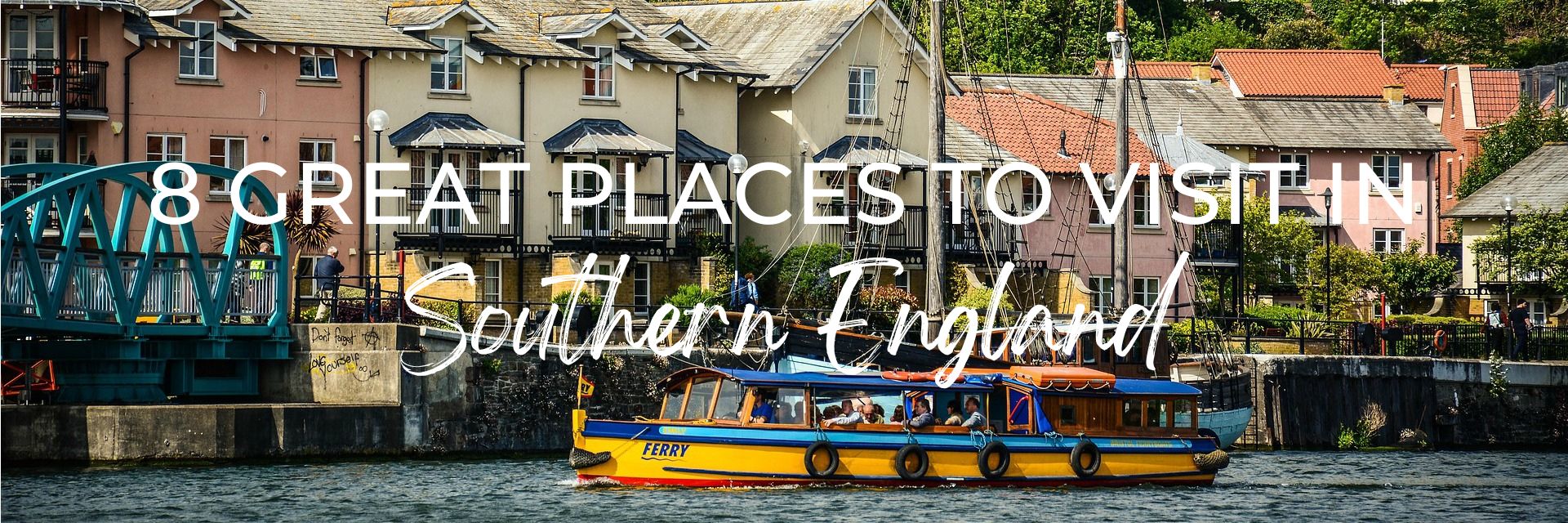
Welcome to the enchanting world of Southern England, where a tapestry of delights awaits to captivate all tastes. From vibrant centers of innovation to a world-famous university town, this region boasts unspoiled villages, rolling hills, and a rich tapestry of history that will leave you spellbound.
As you head to the south coast, immerse yourself in its long-standing maritime traditions, from the bustling ports that sent ships around the world to its storied history of defending the realm and dispatching forces in major conflicts.
Venturing inland, you’ll discover magnificent cathedral cities, vast rolling plains, and ancient monuments, including the iconic Stonehenge, standing as a testament to the passage of time. The charm of Southern England has inspired great authors and visionary engineers whose innovations have left a lasting impact on this captivating landscape.
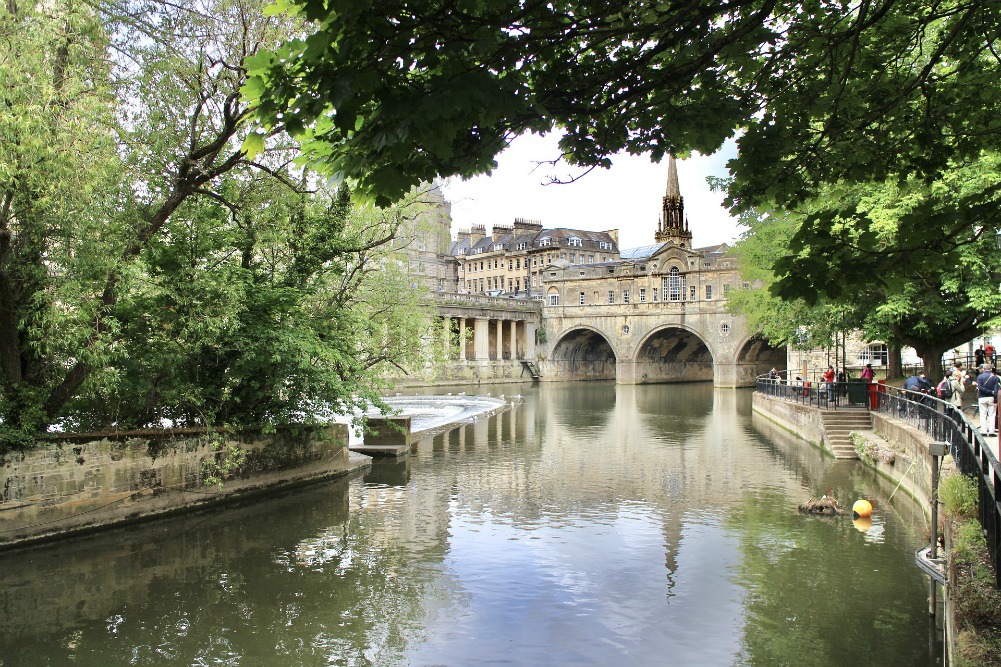
Whether you’re drawn to picturesque villages, fascinated by history’s intriguing tales, or seeking solace in the embrace of rolling scenery, Southern England is sure to fulfill your desires.
So, whether you plan a weekend break, a week-long exploration, or an extended adventure, we’ve curated a list of eight exceptional places to visit in Southern England. Included are two of our all-time favorites, the iconic cities of Oxford and Bath. These recommendations stem from our own experiences and insights shared by fellow travel bloggers. Embrace the very best the region has to offer as we guide you through these unforgettable destinations and prepare to be enchanted by Southern England’s warmth, history, and natural splendor.
This post may contain affiliate links. Please read our full disclosure policy here.
TABLE OF CONTENTS
8 Great Places to Visit in Southern England
Bristol sits on the River Avon in the southwest of England. The location, just two hours from London, and the easy-going vibe make it a perfect city break for both Brits and tourists alike.
Although, nowhere near as bustling and cosmopolitan as England’s capital it is far from sleepy. The popular university and the local’s love of music and the arts contribute to the colourful and lively atmosphere. While the rich maritime history, the pretty architecture and the scenic Avon make Bristol a destination with plenty of sights and activities to please everyone.
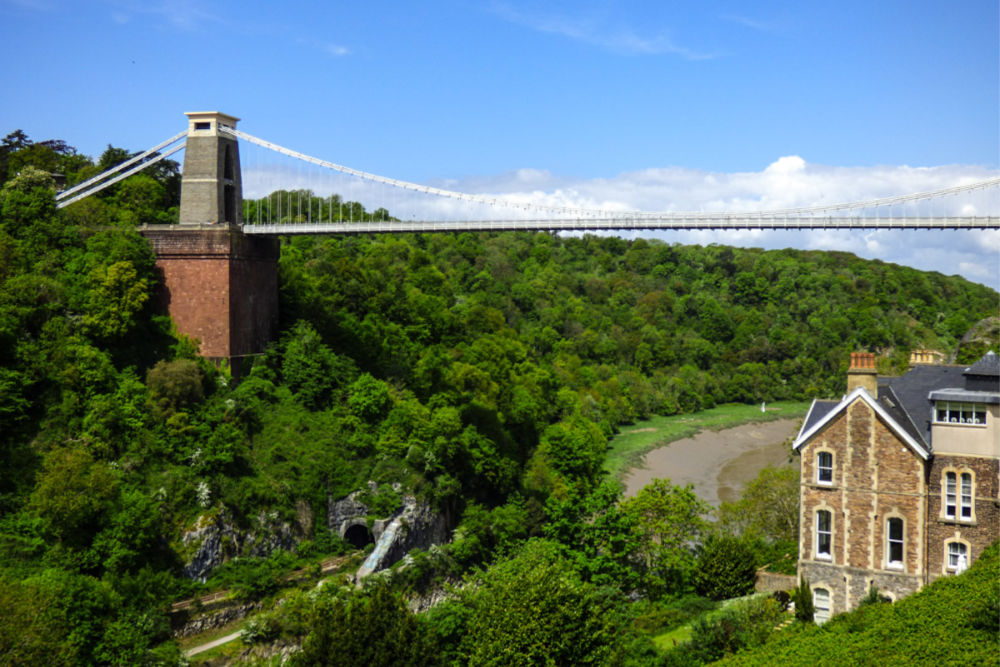
MUST DO IN BRISTOL:
- SS Great Britain: This historic ship was the masterpiece of famed Bristol native engineer, Isambard Kingdom Brunel. It is housed in the Dockland Museum and is open to the public to explore both above and below deck as well as below the ship itself. The setup is quite impressive as the hull sits in a dry dock but a layer of glass holds back the water above. There is also a fabulous exhibit showcasing the works of Brunel.
- Clifton Suspension Bridge: Another masterpiece of Brunel, this iconic bridge spans the River Avon connecting Bristol with North Somerset. Hike up the hill above for stunning views of the bridge and then cross the bridge itself for views of the river and city.
- Take a tour of Bristol’s streets in search of wall art by the famous street artist, Banksy: Bristol is Banksy’s home city and is where he began his work anonymously. Today you can pick up a map and do a self-guided tour or join an organized tour and see famous pieces like The Girl With the Pierced Eardrum, a parody of Vermeer’s Girl with a Pearl Earring.
Contribution from Sarah of Live Dream Discover
READ MORE: Complete Guide to Visiting Brunel’s SS Great Britain in Bristol
Oxford, also called the “city of dreaming spires”, is home to the world-famous University of Oxford which is the oldest university in the UK. Moreover, it’s a paradise for Harry Potter fans, since several colleges have been used as filming locations for the Harry Potter movies.
When you’re spending one day in Oxford, visiting several colleges of the university is a must. I recommend visiting Christ Church College and Merton College, Magdalen College, or Balliol College. Make sure to visit the Bridge of Sighs as well, and see for yourself if it really looks like its namesake in Venice.
However, Oxford is more than just its university. It has a medieval castle of almost 1000 years old and the Covered Market, a historic market that first opened in the 18th-century, is worth a visit as well.
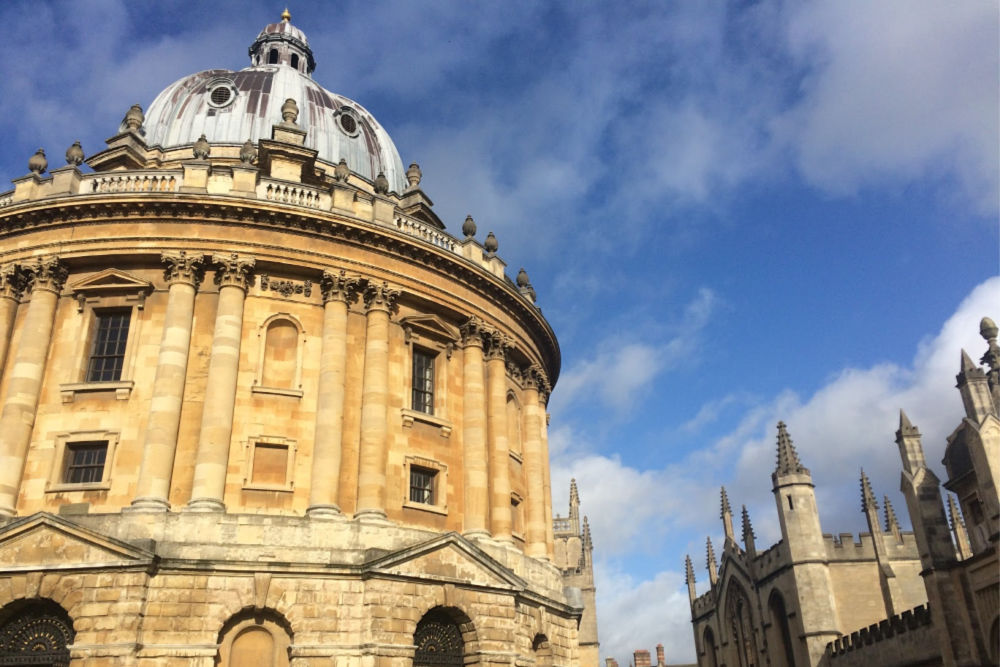
MUST DO IN OXFORD:
- Radcliffe Camera: One of the most iconic buildings in Oxford is the Radcliffe Camera. It was built between 1737 and 1749 and is the oldest round library of the UK. It is part of the Bodleian Library.
- Bodleian Library Tour: Visiting the Bodleian Library is a highlight of a visit to Oxford. The tour includes the Divinity School, which you might recognize as the Infirmary of Hogwarts, and the stunning Duke Humfrey’s library.
- Christ Church College: This is one of the largest colleges in Oxford and includes famous alumni such as Lewis Carroll, the author of Alice’s Adventures in Wonderland. The Great Hall of Christ Church College is stunning and it formed the inspiration for the Great Hall of Hogwarts. The staircase leading up to the Great Hall has also figured in the Harry Potter movies.
Contribution from Sanne of Veni Vidi
Bath is one of the most interesting cities in the UK. The whole city centre is one of England’s UNESCO World Heritage sites due to its beautiful Georgian architecture. Bath has been inhabited since Roman times but it was at its most important in the 19th century when London’s elite would head to Bath for several months at a time.
Bath is relatively compact which means that its attractions are easily reached on foot. The city has some fabulous parks and gardens, including botanical gardens and parks with canals running through them in the city centre. You should also go up to the Prior Park Gardens and the Bath Skyline for views over the city.
Bath is one of the better shopping destinations in the southwest. It has plenty of the usual chains but also has lots of independent shops and cafes tucked down little alleyways which are fun to explore.
You can use Bath as a base to see more of the surrounding countryside too. You’re right on the border of the Cotswolds and you can easily get to more of the south’s attractions including Stonehenge.
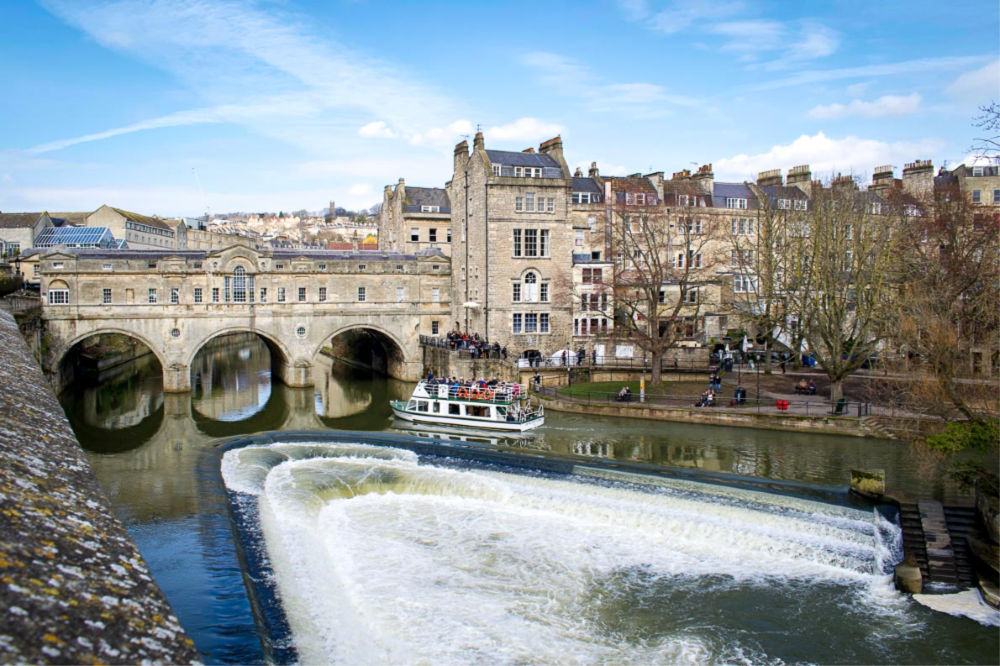
MUST DO IN BATH:
- The Roman Baths: The Roman Baths are the biggest tourist attraction in Bath. They’re brilliantly preserved and the main pool still works, supplied by one of England’s few thermal springs. Don’t forget to try the water – it’s a taste you won’t forget! To bathe in the springs you’ll have to head to the nearby Thermae Bath Spa.
- Georgian Architecture: Take a walking tour to see the best of Bath’s Georgian architecture. Free tours depart from outside Bath Cathedral with unmissable sights such as the Circus and the Royal Crescent, but you should also check out the Assembly Rooms where the 19th-century elite danced their nights away.
- Museums: Bath has some fantastic museums in addition to the one at the Roman Baths. Take a look at Jane Austen’s life in more detail at the Jane Austen Centre, learn more about Regency life at No 1. Royal Crescent, or walk through one of Bath’s art galleries.
Contribution from Emily of Kids and Compass
READ MORE: Weekend Guide to Bath: 48-Hour Itinerary
The story of Salisbury starts with a Roman settlement, just outside the current city built on the top of a hill. Sarum flourished and by the Norman period, it was large enough to warrant the construction of one of England’s castles and a cathedral.
Just five days after the original cathedral was built, it was struck by lightning and suffered extensive damage. Rebuilt and extended, work even started on a Royal Palace during the 1130s. The site wasn’t popular though. Local people complained about the wind and cold which, together with the need to bring water, food, and building materials up the hill, was enough to persuade the powers that be to grant permission for the cathedral to be relocated to a nearby plain in 1218. The foundation of the new cathedral was begun on April 28th, 1220, and completed just 38 years later, in Gothic style.
Salisbury grew quickly to accommodate not just the clergy but wool merchants and traders who made it their home. It’s the oldest ‘New Town’ in England – most of the city is medieval, but instead of the rambling network of streets often associated with that period, Salisbury is a consciously planned city, with the central parts based on a grid pattern known locally as Chequers.
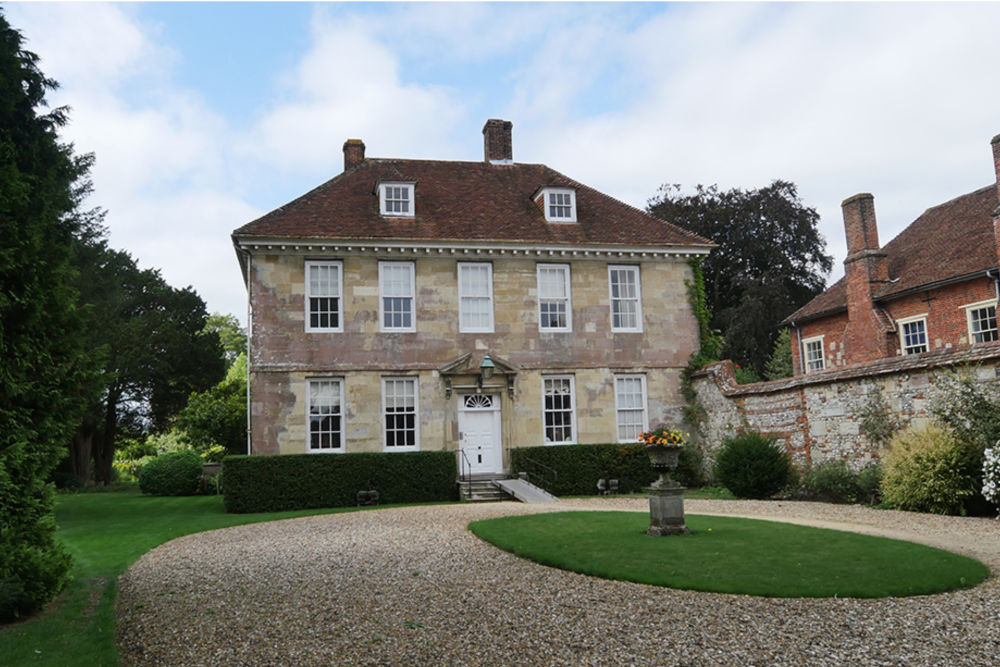
MUST DO IN SALISBURY:
- Salisbury Cathedral: The Cathedral Tower Tour allows you to walk up the 332 steps inside the spire of the Cathedral to a viewing platform almost at the very top. The tour provides a fascinating insight into medieval construction techniques – and of course, the 360-degree views are amazing. The Cathedral is also home to the best-preserved Magna Carta and to the world’s oldest working modern clock in the world dating back to around 1386.
- The Medieval Town: Explore the Medieval town on foot – Look out for Poultry Cross the only remaining market cross in Salisbury built in 1307 then enjoy a beer in the oldest hostelry in Salisbury, the Haunch of Venison, which dates back to 1320 and was built to accommodate the Cathedral builders.
- Visit Arundells: Sir Edward Heath was not only the Prime Minister of the UK but an avid musician and competitive sailor. He bequeathed his former home to a trust set up to enable the public to share some of its treasures. You’ll find a collection of art, fine china, and sailing trophies all displayed just as they would have been during his life. Even the dinner table is set for
company!
Contribution from Fiona of London-Unattached
Winchester is a small city located in Hampshire about 70 miles southwest of London. The area has been inhabited since prehistoric times when, in 871, Alfred the Great established Winchester as the capital of England. Winchester continued to be an important city throughout the early Middle Ages, but during the 12th and 13th centuries power gradually shifted to the new capital in London. During the English Civil War, the city changed hands several times and Oliver Cromwell’s forces destroyed Winchester Castle.
As you walk through picturesque Winchester today, there are still reminders of the ancient capital including ruins from castles and the magnificent cathedral. You can’t miss the huge statue of Alfred the Great in the city centre. Winchester is also known for its connection to Jane Austen because it is here where she died and is buried.
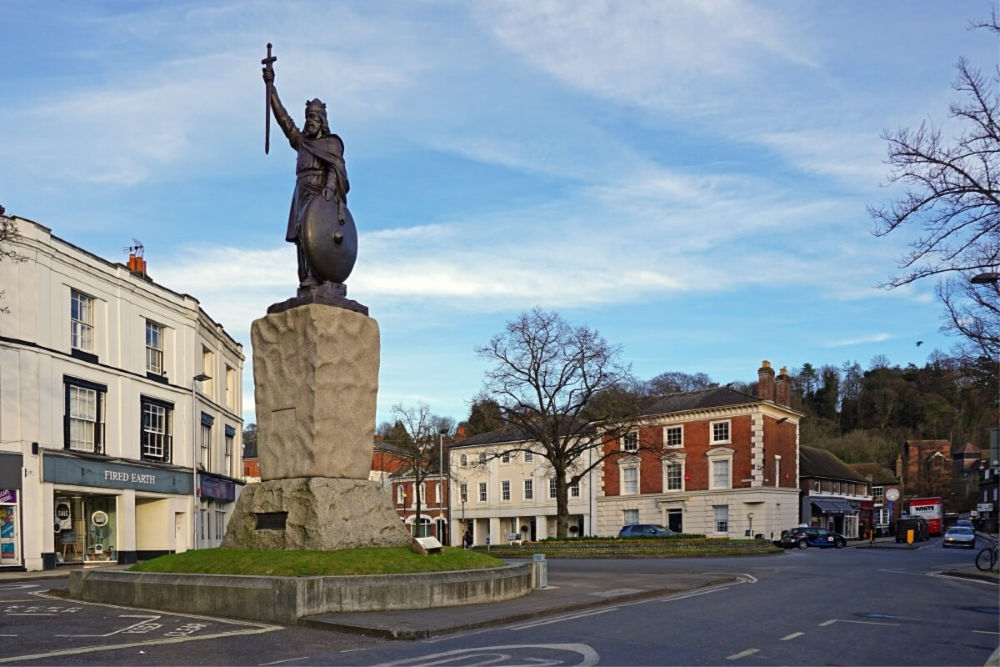
MUST DO IN WINCHESTER:
- Winchester Cathedral: Go inside this beautiful cathedral to see Jane Austen’s grave and the Winchester Bible, the largest 12th-century English bible. In the crypt, you will find an interesting modern sculpture from Antony Gormley.
- Great Hall: The Great Hall is the only building remaining of Winchester Castle. You can see the famous Round Table, gates commemorating the marriage of Prince Charles and Princess Diana, and a statue of Queen Victoria.
- Winchester College and Winchester College Treasury: Take a guided tour of what is believed to be the oldest continuously running school in England. Inside the college, visit the College Treasury, an art and archaeology museum inside recently converted Medieval stables.
Contribution from Anisa of 2 Traveling Texans
The Isle of Portland, a treasure trove of history and natural wonders, proudly showcases the renowned Portland Stone, adorning iconic monuments like London’s Cenotaph and Buckingham Palace, and gracing the UN Headquarters in New York. Its vast man-made harbor played pivotal roles in World Wars, the lead-up to D-Day, and hosted sailing events during the London 2012 Olympics.
Located at the heart of the Jurassic Coast, a UNESCO World Heritage site famous for fossil discoveries, the island is intricately connected to the mainland by the mesmerizing Chesil Beach – a unique barrier beach surrounded by water on both sides. Prepare to be enchanted by the rich heritage and geological marvels of this captivating destination.
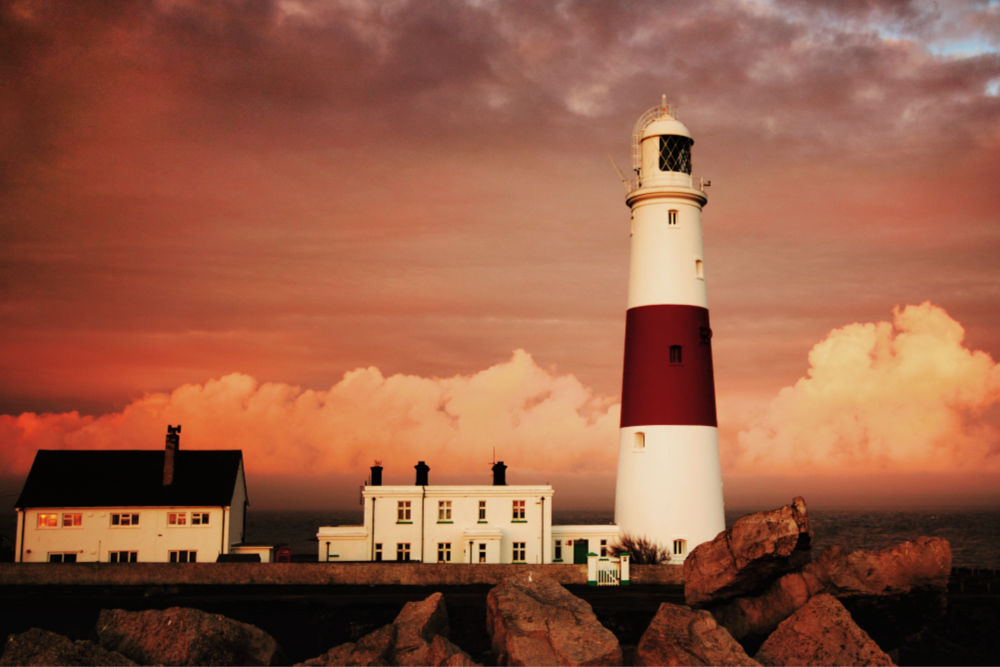
MUST DO IN ISLE OF PORTLAND:
- Portland Bill Lighthouse: Climb the famous Portland Bill Lighthouse for fantastic views across the Isle of Portland and along the Jurassic Coast. Built in 1906 to guide vessels along the English Channel, the lighthouse stands 41m tall and its beam can be seen for 25 nautical miles. Automated in 1996, the former lighthouse keepers’ home is now a museum with exhibits about lighthouses and their keepers and Trinity House, the organization that operates lighthouses in the UK.
- Portland Museum: Located in one of the cottages that Thomas Hardy had the heroine in his novel “The Well-Beloved” live in, the Portland Museum showcases the story of the island’s history with the sea, from Viking times through to the sailing events at the London Olympics of 2012. The museum also has an extensive fossil collection taken from along the Jurassic Coast and tells the story of the world-famous Portland Stone that is quarried here.
- Castleton D-Day Centre: Recreating the Isle of Portland’s wartime dockyards that were used by the 5th US Corp and the US 1st infantry to embark on D-Day as they started the liberation of the continent from the Nazi’s. The museum encourages visitors to interact with the exhibits and you can even dress up in period costumes.
Southampton, the largest city on England’s south coast, boasts a captivating maritime heritage. It was the poignant starting point of the ill-fated Titanic’s maiden voyage and a cherished home to the luxurious QE2 for many years. Even today, the city maintains its strong ties to the sea, serving as the UK’s largest cruise port, bidding farewell to millions of cruise passengers annually.
Yet, Southampton’s history is not confined to the sea alone; the skies play a significant role too. Once hosting the world’s largest flying boat operation, the city witnessed the first flight of the iconic Spitfire from World War II. Additionally, Southampton played a crucial role in the embarkation of troops bound for Normandy on D-Day and beyond. This city’s story is woven with tales of both maritime and aerial prowess, creating a fascinating tapestry of history and innovation.
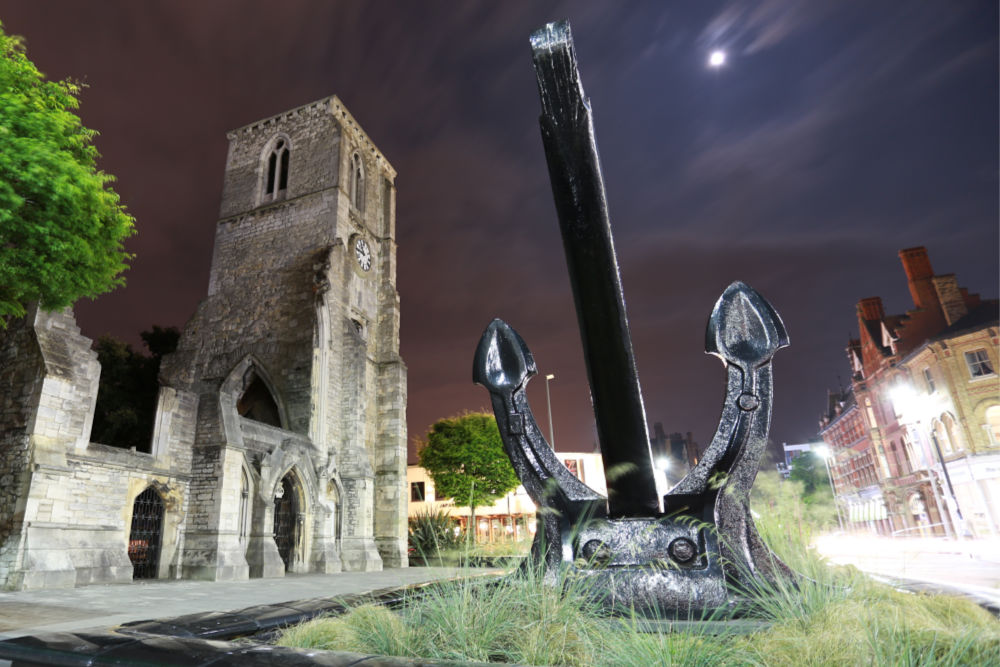
MUST DO IN SOUTHAMPTON:
- Check out the Centuries-Old Houses: Two houses in the centre of Southampton are over a millennia-old between them. The Tudor House & Garden documents 800 years of history and is Southampton’s most important historic building. The Medieval Merchant’s House just a short distance away has been restored to its mid-14th-century splendour and shows how a merchant may have lived in the bustling port.
- Visit the Transport Museums: If transport is your thing, then Southampton’s association with the sea is showcased at
SeaCity Museum. For enthusiasts of the air, the Solent Sky Museum traces the importance of aviation in Southampton, which is the birthplace of one of the most famous planes of all time, the Spitfire. And for those who like automobiles, just south of the city is the National Motor Museum which has over 280 vehicles on display. Exhibits include Formula 1 cars, land speed record holders, and important cars from the history of motoring. - Take a Walk: Whether it’s walking the city walls, which are some of the best-preserved in the UK, to learn about the city’s history, or following the Titanic Trail which takes you to some of the places associated with the ill-fated ocean liner – there really is plenty of interest to see walking around Southampton.
READ MORE: Cruising from Southampton? Check out our guide to the port of Southamptonthat includes information about parking, hotels, and other attractions to visit before or after your cruise.
Portsmouth, a naval stronghold for centuries, remains a proud home to approximately two-thirds of the Royal Navy’s surface fleet. Boasting the world’s oldest dry-dock, its strategic significance in defending England made it one of the most heavily fortified cities on the planet. The port played a vital role in historic events like the D-Day landings and the Falkland Islands’ liberation from the Argentine invasion in 1982.
This vibrant city holds historical significance beyond its naval prowess. It proudly claims Charles Dickens, the renowned author, and Isambard Kingdom Brunel, the visionary engineer, as its native sons. Brunel’s impressive constructions continue to operate across various parts of England, leaving a lasting impact. Additionally, Portsmouth witnessed the world’s first mass-production line, introduced by Marc Isambard Brunel, Isambard Kingdom Brunel’s father. This city’s heritage is an illustrious tapestry woven with maritime might and groundbreaking innovations.
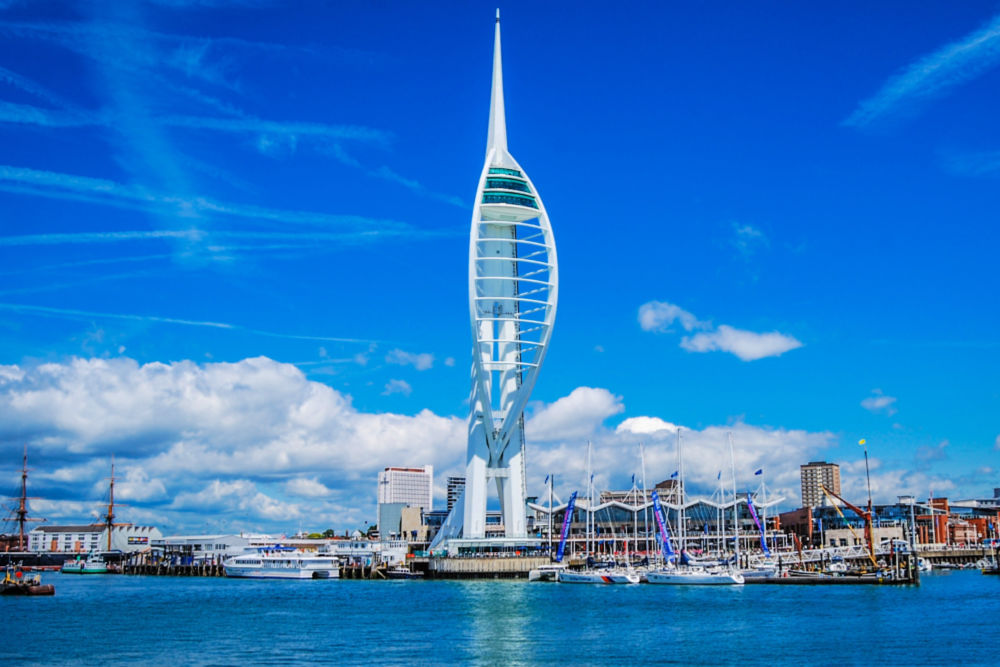
MUST DO IN PORTSMOUTH:
- Historic Dockyard: Explore famous ships from the Royal Navy’s illustrious history such as the HMS Victory (possibly the Royal Navy’s most famous warship due to its role in the Battle of Trafalgar), the HMS Warrior, Britain’s first iron-hulled, armoured battleship and what’s left of Henry VIII’s flagship, the Mary Rose, are also now preserved here after being raised from the seabed.
- Charles Dickens Museum: The birthplace of the famous author was right here in Portsmouth, and you can visit his birthplace. The modest house has been restored to period splendour and has several Dicken’s artefacts, including, rather morbidly, the couch on which he died!
- Spinnaker Tower: Enjoy the view from 100m above Portsmouth as you stand on the glass floor if you dare! Or head up to the third level viewing platform where you are open to the elements, before enjoying afternoon tea on the second level, 105m above the ground. For the extra-daring, you can even abseil down the side of the tower.
As our journey through Southern England draws to a close, we hope you’ve been swept away by the region’s enchanting diversity and timeless charm. From vibrant centers of innovation to the tranquil beauty of unspoiled villages, and the grandeur of historic cities like Oxford and Bath – two of our very favourite cities in England that we could return to again and again.
We encourage you to explore this area’s rich history, from ancient monuments like Stonehenge to the legacies of inspiring authors and visionary engineers and then take in the beauty of the rolling hills, majestic cathedrals, and picturesque villages. We guarantee your travels will be filled with unforgettable experiences in this region of England!
Looking for more information to plan your visit to England? You may find these articles helpful.
RESOURCES | PLAN YOUR TRIP TO ENGLAND
To book flights, rental cars, accommodations, and activities for your trip, please check out our recommended travel providers, favourite apps and websites.
- For more great weekend ideas around England and the rest of Britain, check out one of my favourites – 52 Great British Weekends: A Seasonal Guide to Britain’s Best Breaks
- For weekend ideas in London – The Weekend Starts Here: Fifty-Two Weekends of Things to See and Do – will give you lots of ideas!
- For all things England, you can’t go wrong with Rick Steves! Check out his England travel guide, full episodes of his TV show, or download his app for excellent audio tours.
Some of the links in the post above are affiliate links. This means if you click on the link and purchase the item, we will receive an affiliate commission but this does not affect the price to you. Please read our full disclosure policy here.





